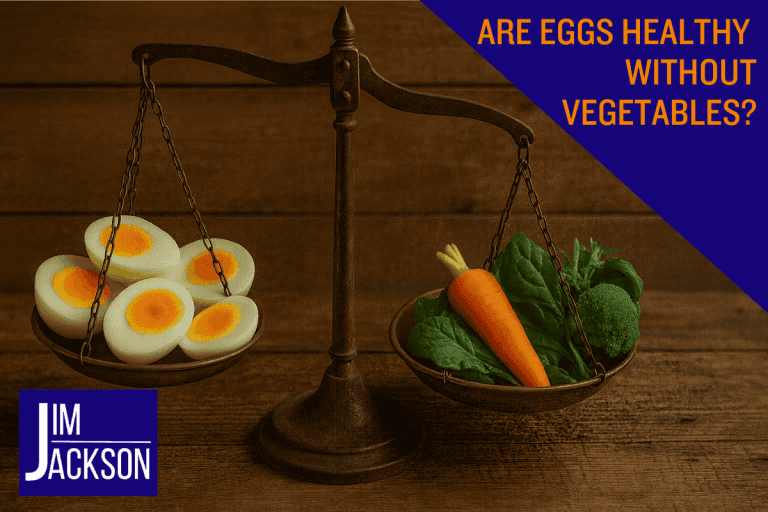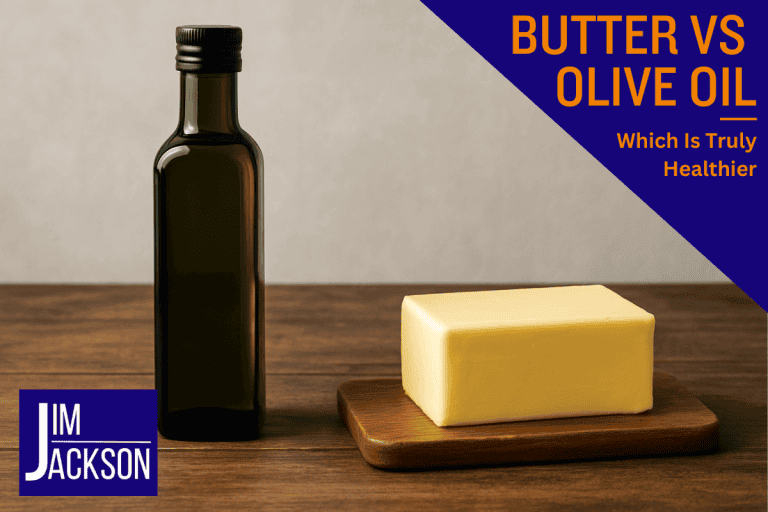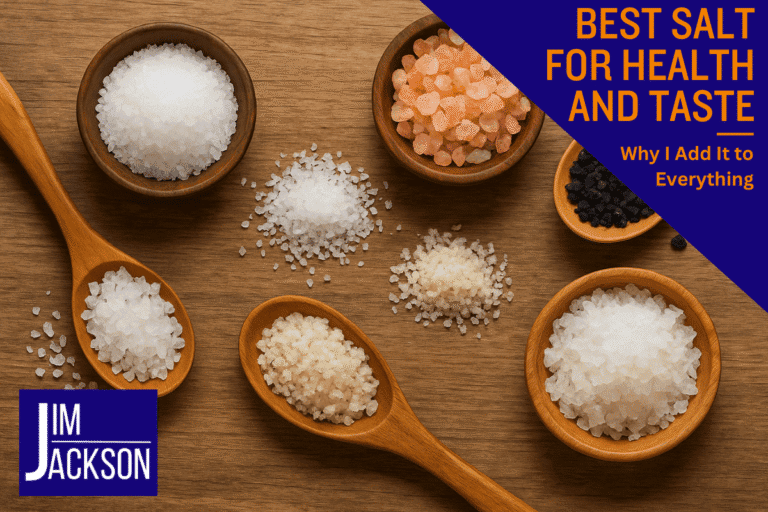The True Ancestral Diet: What Did Our Ancestors Really Eat?
Ever wonder what your great-great-great-great (you get the idea) grandparents had for breakfast? Spoiler: it wasn’t a bagel with cream cheese. In fact, they probably didn’t even eat breakfast as we know it today.
Our ancestors didn’t have convenience stores, food pyramids, or debates about whether eggs are good or bad this week. They ate to survive, thrive, and fuel their next hunt or foraging trip.
But here’s the thing: what many call an “ancestral diet” today is often just a buffet of modern interpretations.
Is piling up a plate with kale, almonds, and avocado what our ancestors ate? Probably not.
This post will get into what an ancestral diet really means (hint: it’s not just paleo or keto diet).
We’ll compare popular interpretations with what I think actually happened for thousands of years.
Spoiler alert: meat is the star of the show—not a cameo. We’ll also debunk some myths about plants, nuts, and fats along the way.
Interested?
Let’s get into why an ancestral diet can be practical and life-changing if we do it right.
TL;DR: Key Takeaways
- Meat First, Always: Meat, particularly organ meats and healthy animal fats, was the cornerstone of our ancestors’ diet, providing essential nutrients and energy.
- Seasonal Plants Are Supplementary: Fruits and vegetables were consumed seasonally and locally, serving as occasional supplements rather than staples.
- Nuts and Seeds Were Backup Food: Labor-intensive to gather and limited in availability, nuts and seeds were fallback options, not primary dietary components.
- Healthy Fats Are Essential: Animal fats were a key energy source, far surpassing modern industrial fats in nutrient density and health benefits.
The Core of Ancestral Eating: Meat as the Base

When we think of survival in the wild, what comes to mind? For our ancestors, it was hunting—and for good reason. Meat wasn’t just food; it was a lifeline.
Unlike modern diets, which treat meat as a bad guy or an afterthought, our ancestors relied on it as their number one source of nutrition.
And let’s be real: chasing a mammoth sounds like a better workout than waiting in line at the salad bar.
Why Meat Was the Centre of Our Ancestors’ Diets
Meat provided our ancestors with nutrients they couldn’t find elsewhere. Every bite contained protein, healthy fats, and fat-soluble vitamins A, D, E, and K, among other things.
These nutrients fuelled their bodies, sharpened their brains, and gave them the energy to survive in harsh conditions.
But they prized more than just muscle meat. Organ meats—liver, heart, and kidneys—were the superfoods. Modern supplements can only dream of replicating these superfoods, which are packed with vitamins and minerals.
While we might turn our snouts up at the thought of eating liver today, our ancestors knew it was nutritional gold.
Animal-Based Nutrition: The Survival Tool
Our ancestors weren’t counting calories or googling “good sources of iron.” They ate what kept them alive and thriving.
Animal fats provided concentrated energy, perfect for people who didn’t have fridges or snack cupboards. Fat also helps absorb essential vitamins and keeps their metabolisms going.
In short, animal products weren’t just food but survival tools.
Debunking Meat Myths
Fast forward to today, and meat has become the dietary bad guy in some circles. Blame it on misinformation, fad diets, or the rise of ultra-processed plant-based alternatives.
Properly sourced meat (think grass-fed, pasture-raised) is one of the most nutrient-dense foods.
Our ancestors didn’t survive on tofu or oat milk—nor should we if we want to eat like them.
Seasonal Plants: A Secondary Source of Nutrition

While meat was the main event in our ancestors’ diets, plants were the supporting act—and a much smaller one than many people think. Fruits and vegetables were seasonal treats, not everyday staples.
Unlike today’s globalized food system, which allows us to eat bananas in winter and blueberries year-round, our ancestors ate only what was locally available and in season.
Fruits and Vegetables: A Supplement, Not a Staple
Let’s get this straight: While nutritious, fruits and vegetables were never meant to be the base of an ancestral diet. They were supplementary, providing occasional bursts of vitamins and hydration.
For example, berries might have been eaten in summer, tubers in colder months. But these were far from the calorie-dense staples needed for survival.

Modern farming has not only made fruits and vegetables more abundant but also changed their nutritional profile.
The fruits our ancestors ate were often smaller, tougher, and far less sugary than the ones we enjoy today. A wild apple, for example, looked nothing like the large, sweet, and juicy ones we enjoy now.
Problems with Plant-Based Foods
Relying on plants as a main food source would have been a risky strategy for our ancestors. Many plants are naturally high in antinutrients, which can inhibit the absorption of essential minerals.
Cooking, soaking, or fermenting can reduce these compounds, but the effort may not have been worth it. Plants may have been survival food in times of scarcity, but they were never the first choice.
Our ancestors prioritized meat because it was nutrient-dense and calorie-rich—a far better return on investment than foraging for leaves or digging up roots.
While modern health trends have elevated vegetables to almost mythical status, we must remember that they are supplementary, not essential, in the context of ancestral eating.
Nuts and Seeds

Nuts and seeds get a lot of love in ancestral diet discussions. After all, they are allegedly nutrient-dense, portable, and full of healthy fats.
But how realistic is it to imagine our ancestors living on handfuls of almonds or sunflower seeds? Let’s see if these were staples or just backup options.
Nuts and Seeds Were Not a Staple
Gathering nuts and seeds required a lot of effort for minimal reward. Think about it: cracking open dozens of hard shells to get a few tiny bits isn’t exactly the most efficient way to eat.
While nuts and seeds may have been eaten occasionally when other food sources were scarce, they were unlikely to be part of our ancestors’ regular diet.
Their seasonal availability also limited how much they could contribute to overall nutrition. In many areas, nuts and seeds were only available during certain times of the year.
This makes it clear they were supplementary food, not a dietary foundation.
Nuts and Seeds in the Ancestral Diet
Many modern interpretations of the ancestral diet emphasize nuts and seeds. Paleo and keto diets often include almond flour, chia seeds, and nut butter as staples. However, we must differentiate between what our ancestors ate and what’s convenient for us today.
The truth is nuts and seeds were probably seen as survival food—a backup plan when hunting or foraging didn’t provide better options.
For modern ancestral dieters, it’s worth asking if these foods should be the main player or just an occasional add-on. Don’t get me wrong, I occasionally have some nuts as a treat.
Fats

Fats get bad press in modern diets, but for our ancestors, they were the ultimate source of energy and vitality.
Unlike the low-fat trends of the last few decades, ancestral diets included fats—especially animal fats—as a part of survival.
Animal Fats vs Plant-Based Fats
Animal fats, such as grass-fed beef, tallow, and marrow, provide concentrated energy and essential nutrients that are difficult to obtain elsewhere.
These fats were not only calorie-dense but also essential for absorbing fat-soluble vitamins A, D, E, and K. Without them, our ancestors wouldn’t have thrived in harsh environments.
In contrast, plant-based fats like coconut and olive oil were unavailable. Extracting oil from plants requires tools and processes our ancestors didn’t have.
While these fats can be added to an ancestral diet today, they weren’t the primary source of nutrition in the past.
Saturated Fats
Modern dietary guidelines often vilify saturated fats, which were the foundation of our ancestors’ diets. Saturated fats from animal sources provide sustained energy and support brain health, metabolic function, and hormone production.
The idea that these fats cause chronic diseases like heart disease is a relatively recent—and highly disputed—concept.
Fats in Modern Times
Today, the rise of ultra-processed foods has warped our understanding of what constitutes healthy fats.
Margarine, seed oils, and other industrial fats are far from the nutrient-dense animal fats our ancestors ate. They’re highly processed, industrialized fats. Try squeezing a seed; you ain’t getting much fat out of it.
It must undergo many processes to extract, re-color, and deodorize it. It’s not natural and shouldn’t be consumed by humans. It’s essentially poison.
Focusing on natural, unprocessed fats is key to reaping the full benefits of an ancestral diet.
Modern Ancestral Diet

Following an ancestral diet, today doesn’t mean going back in time completely. It’s about making intentional choices that reflect the principles of how our ancestors ate while acknowledging modern conveniences and realities.
Modern Ancestral Diet Principles
- Prioritize Animal-Based Foods
Grass-fed meats, pasture-raised poultry, wild-caught fish, and organ meats are the foundation of a nutrient-dense ancestral diet. - Add Seasonal and Local Plants
Use fruits and vegetables as supplements to your diet. Choose what’s locally grown and in season to match your natural eating rhythm. - Healthy Fats
Use natural fats like tallow, lard, and butter from grass-fed sources and occasionally plant-based options like olive oil or coconut oil. - Avoid Processed Foods
Eliminate refined sugars, industrial seed oils, and ultra-processed snacks. Eat whole, unprocessed foods whenever possible.
Conclusion
Honestly, if you cut out processed foods and eat just real whole foods, you’ll be on the right path to regain your health. And, if you’re not too far down the unhealthy path, gorge on as much fruit, starchy veg, seeds, and nuts, and you’ll likely be just fine.
But, if, like I was, you need some serious health reform from such ailments as type 2 diabetes, cardiovascular disease, or obesity, then being more strict on what you eat is essential to regain your health.
It’s essential to mimic the actual diet our ancestors consumed, or what I call the ultimate human diet, which has been coined as an animal-based diet full of nutrient-rich foods.
The ancestral diet foods you’ll see in most guides are heavy on such things as nuts, seeds, fruits, vegetables, and leafy greens. But would these have actually been the main ingredients in this diet?
I think not. They would’ve been seasonal and limited to whatever grows in your area.
I believe ancestral foods would have consisted mainly of animal meats, including their organs, as they are the most nutrient-rich foods on the planet. Perhaps some fish and even raw dairy.
Ultimately, I want you to figure it out for yourself. We’ve been led away from what our bodies need to be healthy, resulting in the sickness we see all around us.
Use the brain you’re blessed with and imagine what would’ve been available to our ancestors before human-made modern foods appeared. That’s what you should be aiming for for optimal health.
Good luck.
And that’s it… have a nutritious day!
FAQs
What was the ancestral diet?
The real ancestral diet focused on nutrient-dense foods like meat, organ meats, and animal fats, supplemented with seasonal fruits and vegetables, and excluded modern processed foods entirely.
What food did ancestors eat?
Ancestors ate grass-fed meats, organ meats, animal fats, seasonal plants, and occasional nuts or seeds, prioritizing calorie-dense, nutrient-rich foods available locally.
What was the German ancestral diet?
The German ancestral diet relied on grass-fed animal meats, dairy, root vegetables, and fermented foods like sauerkraut, reflecting the region’s natural resources and seasonal availability.
What is the difference between the paleo diet and the ancestral diet?
While both emphasize whole foods, the ancestral diet prioritizes nutrient-dense animal products like organ meats, whereas the paleo diet often overemphasizes plant-based options like nuts and seeds.







